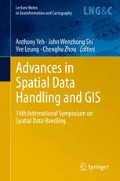Abstract
South Georgia is a glaciated island in the South Atlantic, which provides a primary nesting site for the albatrosses and petrels of the Southern Ocean. 60% of the island is covered by glaciers and ice fields, and the majority of the coastal glaciers are observed to be retreating. A small number of these glaciers are advancing, and others are retreating at anomalously fast rates. As the status of these glaciers is important for environmental management of South Georgia, potentially controlling the spread of invasive species into currently pristine regions, it is necessary to understand the pattern of glacier change in South Georgia. However, detailed study of the glaciology of South Georgia is hampered by lack of measurements of the thickness of the ice. Because of the logistic difficulties of operating on South Georgia, there are no conventional ice thickness measurements from drilling, radar or seismic techniques, and it is unlikely that these will be available in the near future.
This paper addresses this lack of basic information by using surface slope data to estimate the ice thickness of glaciers and ice fields in South Georgia. The surface slope data are derived using surface elevations from the Shuttle Radar Topographic Mission, which provides elevation measurements with a high relative accuracy. The estimate of ice thickness critically depends on assumptions about the conditions in the ice column and at the base of the ice mass, and areas where the estimate is clearly in error provide an insight into changed ice flow conditions or the environment at the ice/rock interface. These anomalous regions are then compared with glacier change data, providing insights into the reasons for the unusually rapid retreat or advance of certain glaciers.
The paper describes the methodology used to compute ice thickness values, with an estimate of accuracy and variability of the thickness measures under different assumptions. The paper then identifies regions with anomalous thickness measurements, and seeks to ascertain why the thickness measurement is unreliable in certain regions. Finally these anomalous areas are compared with coastal change data to suggest why certain glaciers are retreating or advancing more rapidly than the norm for South Georgia, and to make predictions concerning future glacier change.
Access this chapter
Tax calculation will be finalised at checkout
Purchases are for personal use only
References
Cook AJ, Poncet S, Cooper APR, Herbert DJ, Christie D (2010) Glacier retreat on South Georgia and implications for the spread of rats. Antarct Sci 22(3):255–263
Dowdeswell JA, Drewry DJ, LiestøL O, Orheim O (1984) Radio echo-sounding of Spitsbergen glaciers: problems in the interpretation of layer and bottom returns. J Glaciol 30(104):16–21
Drewry DJ (1983) Antarctica: glaciological and geophysical folio. Scott Polar Research Institute, Cambridge
Farr TG et al (2007) The shuttle radar topography mission. Rev Geophys 45, RG2004. doi: 10.1029/2005RG000183
Paterson WSB (1981) The physics of glaciers. Pergamon, Oxford, p 380
Acknowledgements
The authors wish to express their appreciation for input from their colleagues, especially Mr A H Fleming and Mr D J Herbert of BAS. Mr Tate wishes to express his thanks to Professor I Dowman, his supervisor at University College, London.
Author information
Authors and Affiliations
Corresponding author
Editor information
Editors and Affiliations
Rights and permissions
Copyright information
© 2012 Springer-Verlag GmbH Berlin Heidelberg
About this paper
Cite this paper
Cooper, A.P.R., Tate, J.W., Cook, A.J. (2012). Estimating Ice Thickness in South Georgia from SRTM Elevation Data. In: Yeh, A., Shi, W., Leung, Y., Zhou, C. (eds) Advances in Spatial Data Handling and GIS. Lecture Notes in Geoinformation and Cartography. Springer, Berlin, Heidelberg. https://doi.org/10.1007/978-3-642-25926-5_17
Download citation
DOI: https://doi.org/10.1007/978-3-642-25926-5_17
Published:
Publisher Name: Springer, Berlin, Heidelberg
Print ISBN: 978-3-642-25925-8
Online ISBN: 978-3-642-25926-5
eBook Packages: Earth and Environmental ScienceEarth and Environmental Science (R0)

